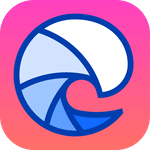When we think of virtual reality, we think of experiencing the world without leaving home – exploring a different reality, entertainment-related spaces or experiencing the new with VR goggles. Meanwhile, VR is entering education more and more boldly, with more and more programs based on the use of artificial intelligence and virtual reality, which can take us to the land of science a little more experientially. What can VR be used for in science?
Dr. Dorota Celińska-Kopczyńska (Institute of Computer Science, Faculty of Mathematics, Informatics and Mechanics, University of Warsaw, Faculty of Economic Sciences, University of Warsaw) talks about what virtual reality can be used for in science, including at the University of Warsaw, answering Dr. Justyna Pokojska’s questions about:
- examples of using VR in education,
- a project which uses VR to teach non-Euclidean geometry,
- problems with virtual reality – in particular the time we can spend in it,
- the triangle made of three right angles, and the assumptions of non-Euclidean geometry,
- reasons why a coral reef or a lettuce leaf takes a particular shape,
- the use of VR in a non-isotropic world,
- a new statistical reality involving geometry,
- the premise of the VR game HyperRogue, which „melts the mind” 🙂
- learning from participating in a virtual world.











